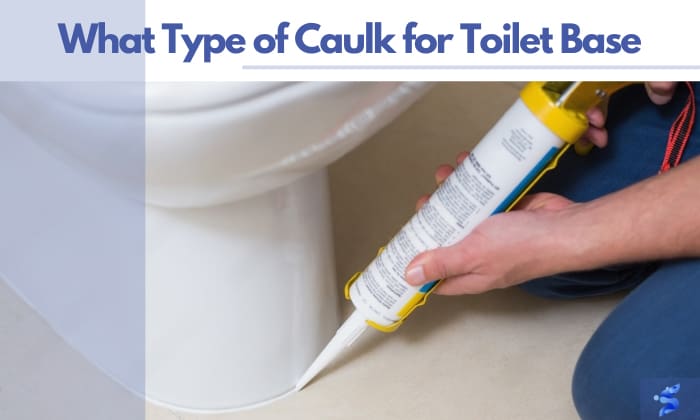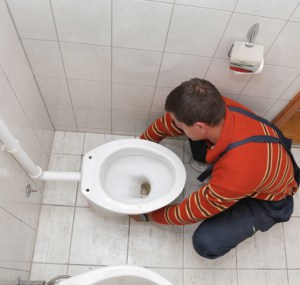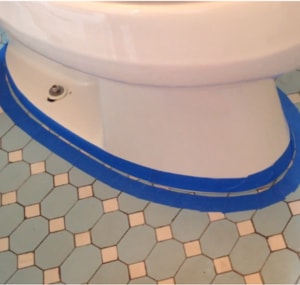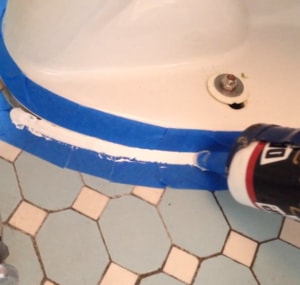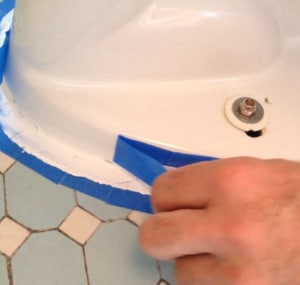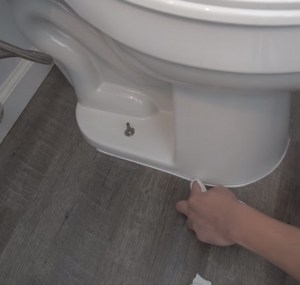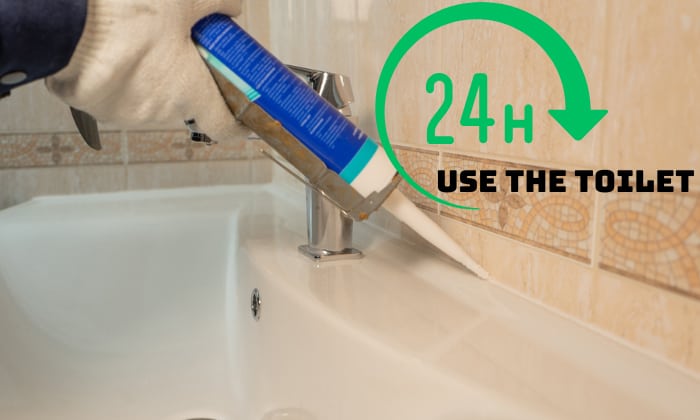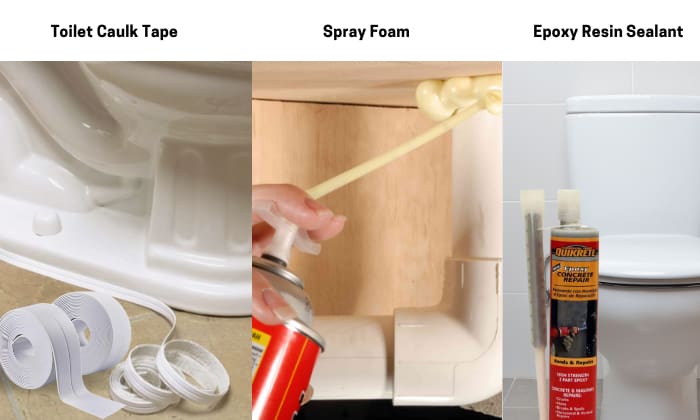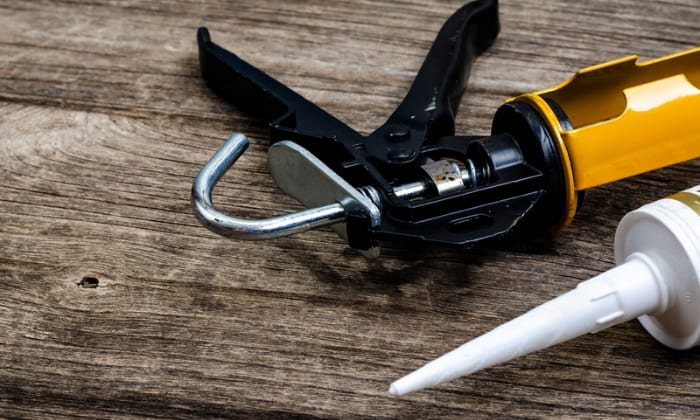Caulking the toilet base is easy as long as you know what caulk to use. The best caulk can create the strongest seal, keeping the toilet secure and leak-free. So, what type of caulk for toilet base works?
A silicone-based caulk offers the best results. Unlike other types of caulk, it provides the highest waterproof protection. The color doesn’t affect the performance of the silicone caulk.
Continue reading to learn more about the different types of caulk for toilet bases.
Table of Contents
White or Clear Caulk: Which Should You Choose?
Choosing a caulk between white and clear colors is a matter of style preference. If you want to keep the bathroom looking nice and neat, pick one that matches the color scheme. Regardless of the color, the caulk still delivers the same benefits to the toilet base.
A white caulk looks seamless on a white toilet and floor because it blends pretty well. Compared to clear caulk, white can better conceal gaps or imperfections around the toilet base. However, it can show the accumulation of dust and dirt over time, so regular cleaning is essential.
A clear caulk is ideal if the gap between the toilet base and the floor is very small. If the gap is large, a clear caulk will only draw attention to it. The good news is that you don’t have to worry about the sight of the caulk leaking onto the floor because it looks invisible.
Benefits of Caulking Your Toilet Base
If someone asks you, “Should you caulk around the toilet?”, your answer should be yes. Caulking around the toilet is a plumbing requirement and can provide many benefits, such as:
- Aesthetics: Sealing the toilet base with caulk also makes the floor look even and the bathroom finish more elegant. Over time, that small gap will be filled with dirt and grime so it will look dirty when it turns black.
- Hygienic: Leaving a gap around the toilet can trap water running from the mop, shower, and waste. When stagnated, that area can be a breeding ground for bacteria and molds. To keep your bathroom healthy, apply caulk to fill that gap.
- Adds Stability: Caulk sealing toilet to the floor keeps it standing strong, especially if you have an uneven bathroom floor. You don’t have to fear that the toilet will sway or collapse when you sit on it.
Is Silicone or Latex Caulk Better?
Caulk is mostly available in two types of materials: silicone and latex. Using silicone for toilets is better than latex because it’s more waterproof. Silicone can resist moisture damage, making it an ideal caulk for sink and toilet applications.
Using silicone around the toilet base also lasts longer than latex. It’s flexible and can withstand any temperature changes inside the bathroom. As a result, this type of caulk doesn’t crack easily.
The only drawback of silicone caulk is that it’s expensive. Also, you have to use a special caulking gun to make this type of caulk easier to work with.
How to Put Caulking Around Toilet
This is an easy job that everyone can do. All you need is a silicone caulk and caulking gun.
1. Clean the area to caulk
Clean the toilet base from any dust, debris, or grime to ensure that the caulk will bond securely. If your toilet has an old caulk, remove it to let the new caulk bond stronger to the surface. Once done, let the treatment area dry because the caulk won’t stick to wet surfaces.
2. Apply painter’s tape
Apply painter’s tape to the area where you don’t want the caulk to infiltrate. Put it a little further around the toilet base. The tape will protect the bathroom floor and ensure that the caulking is applied smoothly.
3. Apply the caulk
Now, position your hand at an angle and squeeze the trigger of the caulk gun to caulk the bottom of the toilet. Go around the toilet base without overlapping the painter’s tape. To ensure that the caulk bonds to the surface, press it gently.
4. Remove the tape and any caulk excess
After you finish caulking, remove the painter’s tape around the sealing base of the toilet. Wipe any excess caulk with a sponge to make everything look clean.
5. Wait the caulk to dry and cure
Now, the waiting game begins. Allow the caulk to cure fully, otherwise, it won’t make a secure seal. How long exactly, is discussed in the next section.
How Long for Caulk to Dry Around Toilet?
Generally, caulk feels dry within 30 minutes but it doesn’t mean that it’s ready to use. Every brand needs a specific curing time before the caulk fully sets in. Also, the temperature can affect the drying time.
Quick-drying formulas can take at least three hours to dry. Under normal conditions, they can dry as fast as 30 minutes to an hour. Regardless, it still needs at least 24 hours before you can use the toilet.
During colder days, silicone caulk takes longer than usual to cure whereas other types become unusable. It also extends its drying time when exposed to water, hence, avoid using the toilet while curing the caulk.
Alternative to Caulking Around Toilet
If you can’t get hold of silicone caulk, you can try any of these alternatives.
- Toilet Caulk Tape: The easiest way to use caulk is to use the strip version. You don’t need any tools to run this tape around the toilet base. However, it’s not as waterproof as the original caulk solution.
- Spray Foam: Similar to caulk, spray foam helps solve water leak problems. If you have a small leak in your toilet base, use spray foam.
- Epoxy Resin Sealant: Epoxy is another great sealant for toilet bases as it creates a strong adhesion to the floor. While it offers more water resistance, it’s more expensive and harder to install than caulk.
Tips for Caulking
There are a few tricks that professionals do to make the caulking job more effective. Here are some DOs and DON’Ts in caulking for toilets.
- Do use the best silicone caulk. It should be made of 100% silicone to ensure durability.
- Find a good quality caulk gun to make the application process faster and quicker. Choose a caulk gun that has an easy-to-use trigger.
- Do use a backing material when the gap is wider than ¼ inch and deeper than ½ inch. Put the backing material, then apply the caulk for larger gaps.
- Don’t use uneven pressure when caulking around the toilet flange. Doing so will result in uneven beads and crooked application.
- Don’t use the toilet while the caulk is still wet. It will extend the drying and curing time.
The caulk can change in color over time. If your silicone caulk is turning brown or yellow, here are some tips you can do.
- Remove the yellow stains with a cup of vinegar or mix equal parts of vinegar and baking soda. Apply to the affected area and scrub vigorously.
- Try to clean the brown caulking with baking soda.
- Recaulk to get fresh new caulk and eliminate the discoloration problem.
Frequently Asked Questions
Caulk or silicone: what’s the difference?
Silicone is a more flexible material than caulk. It provides a watertight seal to prevent fixtures from getting water damage. Because it’s flexible, this material won’t crack in freezing temperatures even when the area moves.
Caulk is used to fill gaps and joints to prevent water from getting into those narrow areas. Compared to silicone, it’s more rigid, making it ideal for stationery items like toilets and sinks.
How long until the silicone caulk is waterproof?
After the curing period, silicone can last its waterproof qualities for up to 20 years. The years can shorten when you expose the caulk to harsh elements like sunlight exposure, extreme temperature, and chemicals. For optimum results, choose a high-quality silicone caulk product.
Will silicone caulk dry if it gets wet?
The caulk won’t provide the expected results when it gets wet before it cures fully. A poorly cured caulk will result in a poor seal, leading to more serious problems like water leaks and mold growth. If this happens, repeat the caulking process with a new batch of caulk.
Conclusion
Now, you know what type of caulk for toilet base to use. Always read the instructions of the product before using it so you’ll get the best results. Follow the curing time and apply the right application techniques to ensure that you get the proper seal possible.
If you have tried caulking your toilet, let us know your experiences in the comment section below. Some people might need this information, so feel free to share this article on your social media accounts.

I’m Paulk Webb, and I work as a writer for Saveourwaterrebates. I’m happy to put in the time and effort to conduct market research to identify the most pressing issues faced by households concerning their plumbing. Feel free to check out our guides to get the most informed recommendations for how to solve your problems.


